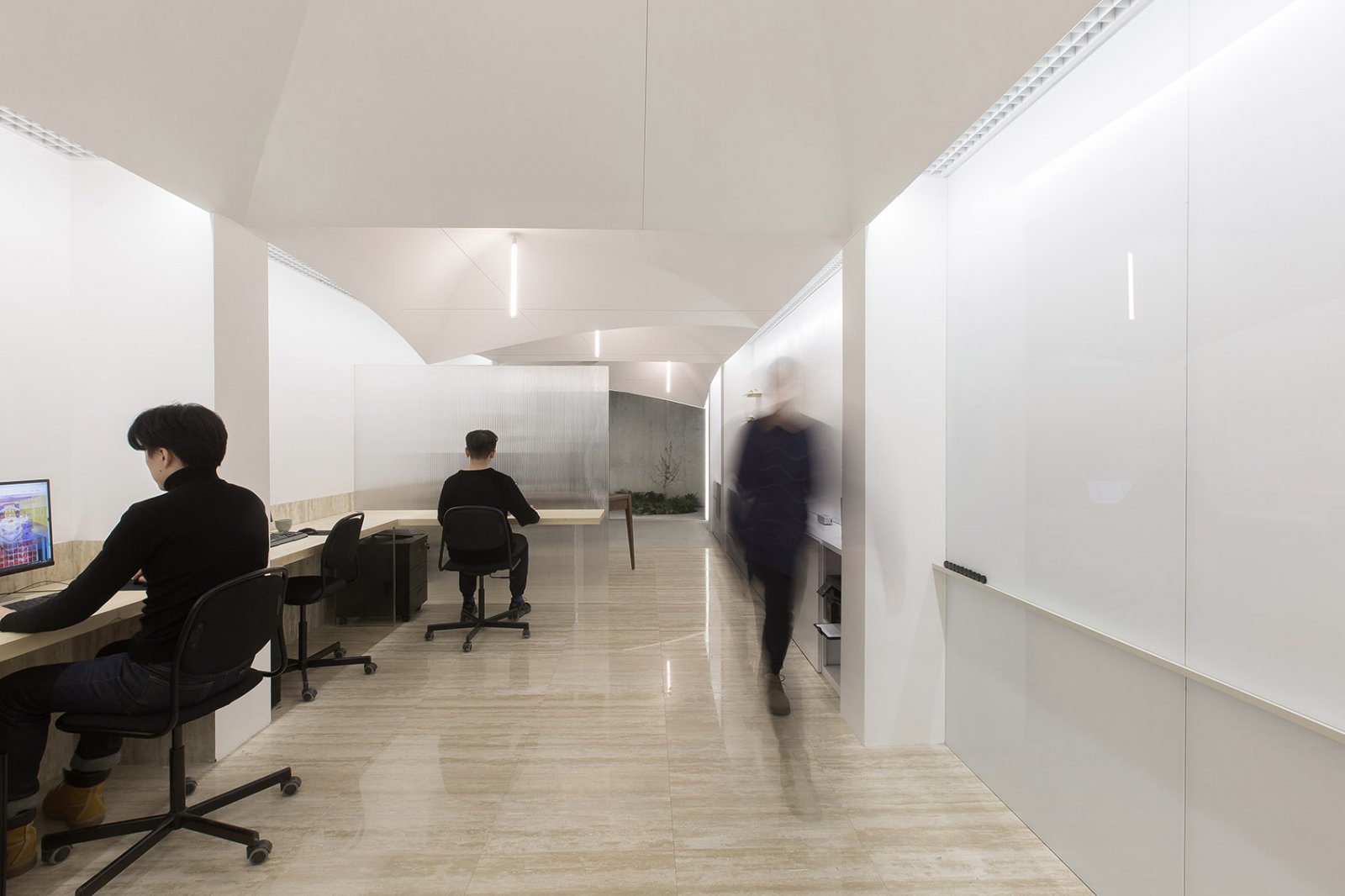School of Sciences DCOOP
2011-08-24 00:00
架构师提供的文本描述。科学学院有着各种各样的庭院、露台、柱廊、入场券和有趣的动作,这是一次发现之旅。这座建筑庄严的正面传达着大学所代表的严肃的学术追求的形象,而建筑本身则围绕着它的使用者-教职员工和学生。
Text description provided by the architects. With its varied courtyards, terraces, columned halls, entries and playful movements, the School of Sciences is a journey of discovery. While the solemn front of the structure conveys the image of serious academic pursuit that the university stands for, the building itself is centered around its users–faculty and students.
科学学院的设计是为了容纳多个研究生理科系和他们的教学和研究设施的组合。鉴于当今教育的动态性,学科的流动性和对市场需求的反应能力,这座建筑必须具有内在的灵活性,以适应未来的变化。
The School of Sciences has been designed to house multiple post-graduate departments of science with their mix of teaching and research facilities. Given the dynamic nature of education today where disciplines are fluid and responsive to the demands of the market, the building had to be inherently flexible to adapt to future changes.
这座建筑是由建筑师为库达帕镇附近的一所研究生大学设计的面积更大的420英亩校园规划的一部分。这一设计是基于对该计划的严格分析,其中的功能被划分为灵活/特定的功能。在功能分析的同时,设计的一个关键刺激因素是对传统印度建筑的主题元素进行重新诠释,如雅利、庭院和巨大的柱状大厅(例如寺庙和清真寺)。这些要素是对环境和气候作出敏感和经过检验的反应的例子。此外,它们也成功地说明了如何在不失去象征意义的情况下,将公共建筑的规模扩大到个人的亲密程度。
The building is part of a larger 420 acre campus plan designed by the architects for a post-graduate university near the town of Cudappah. The design is based on a rigorous analysis of the program where functions are categorized into flexible/specific functions. Along with functional analysis, a key stimulus for the design has been the re-interpretation of thematic elements of traditional Indian architecture such as the jali, the courtyard and vast columnar halls (of temples and mosques for example). These elements stand as examples of a sensitive and tested response to context and climate. Moreover, they are also successful illustrations of how public buildings can be scaled to a personal intimate scale without losing their symbolic gravity.
最终的组织依赖于四种组织策略-手指、插头、堆栈和脊柱。手指是由模块化的海湾组成的,在每个交替的海湾里,实验室和教室都设有服务管道。手指的方向是对气候有反应的,最少暴露在东西辐射下,所有工作空间都有自然的北面照明,还有一个由带有屏幕的移动走廊缓冲的南立面。
The resulting organization rests on four organizational strategies- the FINGER, the PLUG, the STACK and the SPINE. The FINGER is made up of modular bays which house the labs and classrooms with service ducts in every alternate bay. The orientation of the FINGER is climate-responsive with minimum exposure to east-west radiation, natural north-lighting for all workspaces, and a south façade buffered by movement corridors with screens.
手指连接在一起的是塞子,其中包含着更具体的功能,如教员室、图书馆和行政办公室;这些插件与多个小庭院紧密相连。堆叠是大楼的主要服务设施-楼梯、厕所和电梯块,并连接垂直和水平移动。把整个团队绑在一起的是一个活动脊柱,它的巨大大厅里有巨大的钻石“柱”,还有一个古怪的华夫饼板。
Fingers are held together by PLUGS housing more specific functions such as faculty rooms, libraries, and admin offices; that are intimately scaled with multiple small courtyards. The STACKS house the main services of the building - staircases, toilets and lift blocks and also connect the vertical and horizontal movements. Tying the entire group together is a movement SPINE with its vast halls of massive diamond ‘columns’ and an eccentric waffle slab.
手指之间形成了三个大的公共庭院,里面有梯形的研究室,创造了有趣的焦点。金属和混凝土的屏幕增加了必要的纹理和保护沿着庭院的公共空间。块体的错位形成了三个层次的梯田。
Three large public courtyards formed between the fingers house trapezoidal seminar rooms that create interesting points of focus. Screens in metal and concrete add the necessary texture and protection to the common spaces along the courtyards. The staggering of the mass in section creates terraces at all three levels.
由于场地位置偏远,而且有政府的惠顾,建筑所需的建筑技术和材料有限(对砖和混凝土有着强烈的偏好)。该设计致力于突破现有建筑范式的界限,创造出一种当代和动态的结构。科学学院的成功在于它对规模的分层控制和空间的复杂性,同时从程序的务实和逻辑分析开始。这些丰富的体验性接触-在不妥协于功能或形式身份的情况下实现-创造了一种超越视觉的建筑,是通过身体在空间中的运动而发自内心地体验的。
Given the remote location of the site and government patronage, a limited repertoire of construction skills and materials (with a keen preference for brick and concrete) was available for building. The design works towards pushing the boundaries of this existing paradigm of building to create a contemporary and dynamic structure. The success of the School of Sciences lies in its layered control of scale and the complexity of spaces achieved while beginning from a pragmatic and logical analysis of program. These rich experiential encounters - realized without compromising on function or formal identity - create an architecture that goes beyond the visual and is experienced viscerally through the movement of the body in space.
 举报
举报
别默默的看了,快登录帮我评论一下吧!:)
注册
登录
更多评论
相关文章
-

描边风设计中,最容易犯的8种问题分析
2018年走过了四分之一,LOGO设计趋势也清晰了LOGO设计
-

描边风设计中,最容易犯的8种问题分析
2018年走过了四分之一,LOGO设计趋势也清晰了LOGO设计
-

描边风设计中,最容易犯的8种问题分析
2018年走过了四分之一,LOGO设计趋势也清晰了LOGO设计
















































































